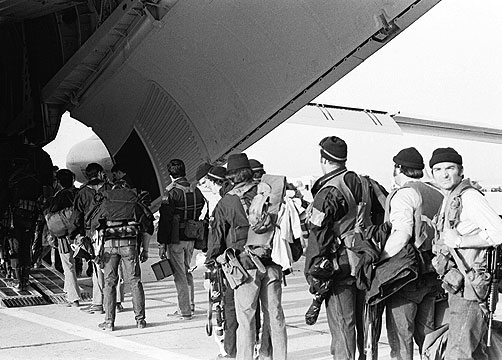April 25, 1980, was a defining moment the American people and Special Operations.
At 7 a.m., a somber President Carter announced to the nation and the world the tragic news of Desert One. He revealed a secret hostage rescue mission had failed; eight American servicemen were dead and several others were seriously injured.
Problems with the superficial success of the Grenada invasion in 1983 and failure to fix the Special Operations joint mobility issues led Congress to pass the Nunn-Cohen Amendment in October of 1986. The amendment mandated the President create a unified combatant command for Special Operations with control over its own resources.
DoD wanted the command to be a two- or three-star command, but Senators Nunn and Cohen insisted on a four-star command. There were fundamental flaws in interoperability. Also, the senators felt the command’s profile needed to be raised to get the money, the appropriations and the authority to start the command significantly.
U.S. Special Operations Command was formed Apr. 16, 1987 with responsibility to organize, train and equip Special Operations Forces from the Army, Navy and Air Force.
Naval Special Warfare Command activated the same day as SOCOM; U.S. Army Special Operations Command activated Dec. 1, 1989; and Air Force Special Operations Command activated May 22, 1990.
Marine Corps Forces Special Operations Command activated Feb. 24, 2006 due to the insistence of Secretary of Defense Rumsfeld.
The four tribes of USSOCOM’s family now complete.
SOCOM’s first tactical mission was in Operation Earnest Will. The mission involved SEALs, Special Boat Units, and Army Special Operations aviators flying Little Birds who worked together and disable the Iranian ship Iran Ajr while the ship was laying mines in the Persian Gulf.
Since then, the command has done a remarkable job in improving its joint-service interoperability and has been significantly involved in every major conflict since its inception.
USSOCOM’s responsibilities have significantly evolved from its original train and equip mission of SOF to the lead in planning, synchronizing, and as directed, executing global operations against terrorist networks. Synchronizing SOF operations around the world is the command’s key task supporting the combatant commands.
Already have an account? Sign In
Two ways to continue to read this article.
Subscribe
$1.99
every 4 weeks
- Unlimited access to all articles
- Support independent journalism
- Ad-free reading experience
Subscribe Now
Recurring Monthly. Cancel Anytime.
Special Operations and its Operators are always competitive and the four tribes within SOCOM compete for missions.
Which tribe is better at what mission is an article for another day.









